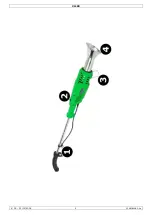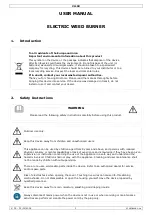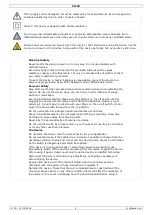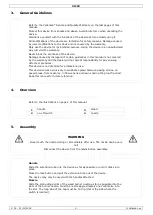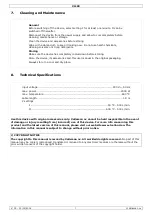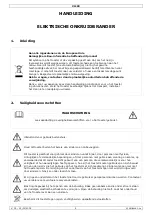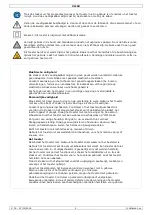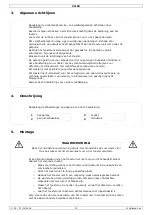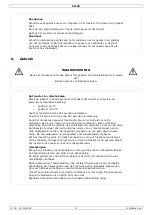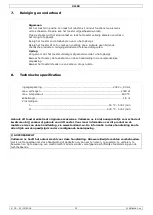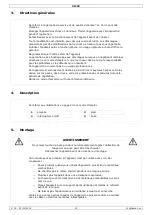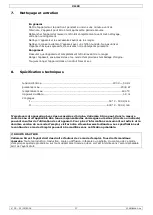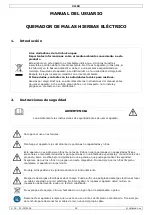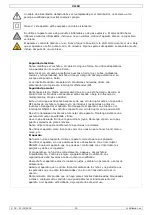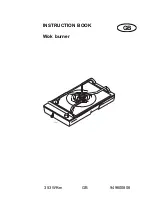
VL108
V. 03 – 31/01/2018
6
©Velleman nv
6.
Operation
WARNING
Never touch the nozzle during use. The nozzle can be very hot!
Never cover the ventilation openings.
A fire may result if the appliance is not used with care. Therefore:
o
be careful when using the appliance in places where there are
combustible materials
o
do not apply to the same place for a long time
o
do not use in presence of an explosive atmosphere
o
be aware that heat may be conducted to combustible materials, which
are out of sight
o
place the appliance on its stand after use and allow it to cool down before
storage
o
do not leave the appliance unattended when switched on
o
do not allow hot parts of the appliance to touch the cord or other
flammable materials.
Switching On-Off
Connect the device to the mains and switch on. Select one of the two settings:
o
position I: 50 °C
o
position II: 600 °C
Leave the device to warm up for at least 45 seconds.
Hold the device at an angle of 45° away from the user.
To eliminate weeds, gently waft the nozzle approximately 5 seconds over the
weed. Do not burn the plant completely, only the heat is needed. Keep the
nozzle at a distance of approximately 15 cm of the weed. Stronger weeds or
woody stems (wild grass, roots, etc.) may require a repeat application. If
necessary, repeat this procedure after a few days. Do not use this device on
flower beds or lawns.
Before switching off, switch to position I and let run for at least one minute.
Switch off the device and disconnect from the mains after use. Place on its stand
and leave to cool down completely.
Remarks
Dry woods, leaves, pine needles and dry grasses may catch fire. Watch the
treated plants for some time after treatment.
The best time to treat sprawl is in the spring. The results are not visible
immediately.
Older plants with hard leaves, such as thistles, dry earliest after repeated
treatment at intervals of one to two weeks. Some types of grasses are extremely
robust and require a longer exposure to heat.
The weed needs only be heated. Burning is not necessary. The cells of the leaves
dry out in this way and the weed dies.
Certain weed species require repeated treatment.


